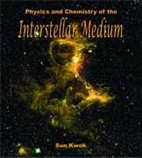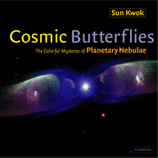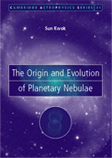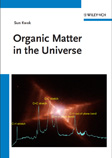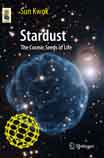Prof. Sun Kwok answers some of the common misconceptions in science
Why don't we feel the movement of the Earth around the Sun?

One of the strongest argument against Copernicus' heliocentric theory was that it was contrary to our common sense. Scholars in the 16th century asked: “if we are moving at high speed around the Sun, how come we don’t feel it?” When we stand on a merry-go-around, we know that we are moving even though the merry-go-around is moving at a much lower speed than the Earth is revolving around the Sun. The most common answer you will find given today is that it is like flying on an airplane. While the plane is going at high speed, we don't feel the movement. This is incorrect because a plane flying at constant speed in a straight line, we are in an inertial frame of reference. As soon as the plane turns or decelerates, we will immediately feel the effects. While we cannot distinguish between uniform movement and being at rest, we can tell without looking when the vehicle that we are in is accelerating or rotating. When one is in a non-inertial frame of reference, there exists a fictitious force called the inertial force. In the case of the Earth revolving around the Sun, the inertial force is the centrifugal force. Since the Earth is in a state of free fall, this centrifugal force is exactly balanced by the gravitational force from the Sun. The balance of the two forces is zero. This is the reason we feel nothing.
Quantitatively, the Earth is moving around the Sun at a speed of over 100,000 km per hour. The magnitude of the acceleration due to the centrifugal force (and therefore also the gravitational force) is 0.6 cm sec-2. In comparison, the gravity we feel on the surface of the Earth is 980 cm sec-2. On a merry-go-around of 5 m radius rotating with a period of 1 minute, velocity at the edge is 1.9 km per hour, and the centrifugal acceleration is 5.5 cm sec-2.
What causes weightlessness in the space station?
Weightlessness in space is often cited as the result of lower gravity in a spacecraft far from Earth. In fact, the difference in gravitational force for an astronaut in a space station in a 400 km orbit and the surface gravity on Earth is minimal (about 11%). The correct answer is that an astronaut in an Earth-orbiting space station is in a state of free fall where the effect of gravity is exactly balanced by the centrifugal force. The effective gravity is zero and hence the weightlessness.
Are the four seasons equal?
Around 330 B.C., Callippus (370 – 330 B.C.) noted that this was not true. Spring in the northern hemisphere (the time between vernal equinox and summer solstice) is 94 days, summer (from summer solstice to autumnal equinox) is 92 days, autumn is 89 days, and winter is 90 days. Two hundred years later, Hipparchus produced more accurate values of 94½, 92½, 88⅛, and 90⅛ days for spring, summer, autumn, and winter, respectively (a total of 365¼ days). The unevenness of the seasons was recognized in China by 張子信 in the 6th century A.D. In fact, the lengths of the seasons are not constant and have been changing through time. At the beginning of the 21st century, the lengths of the seasons are 92.8 days for the spring (and getting shorter), 93.7 days for summer (and getting longer), 89.9 days for autumn (and getting longer), and 89.0 days for winter (and getting shorter). (from Chapter 11, "Our Place in the Universe" by S. Kwok, Sprinter, 2017).
When did we know that the Earth is round?
It is a common misconception that it was only after Columbus voyage to the America that we learned that the Earth is round. In fact, the Greeks knew that the Earth was round as early as 2500 years ago. This conclusion was based on several observational facts. By planting a vertical stick on the ground, they were able to determine the apparent paths of the Sun over the course of a day and a year. They found that these paths are different for observers at different locations. From the shape of the Earth’s shadow during lunar eclipse, the could see that the Earth’s shadow is round. In Egypt, they could see the star Canopus (the second brightest star in the sky), but not from Athens. Combining with their knowledge of geometry, the Greeks concluded that the Earth must be a sphere.

